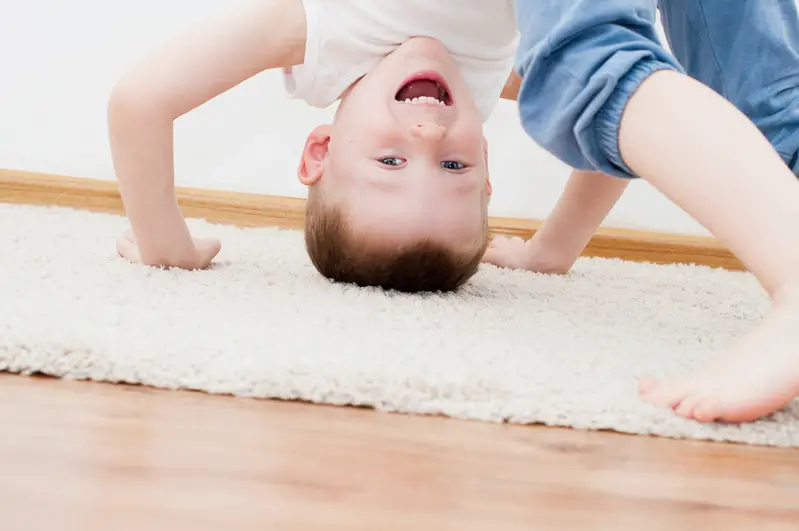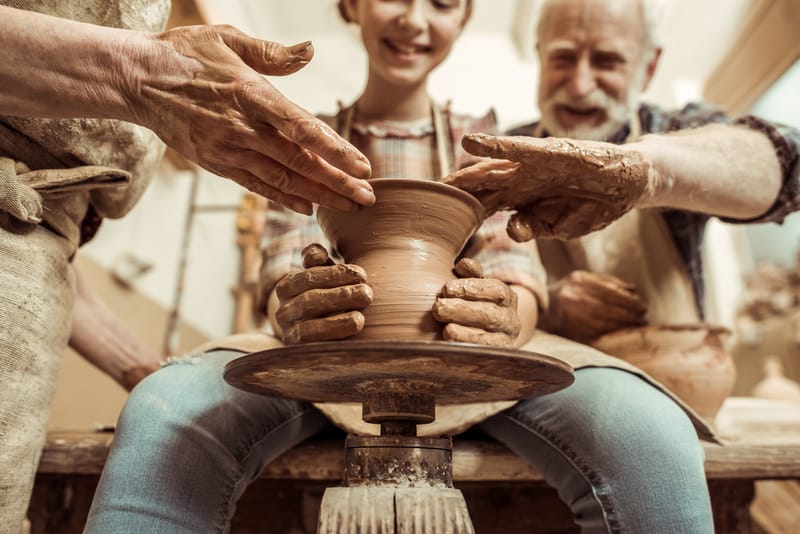Attention Deficit Hyperactivity Disorder (ADHD) is a mental health condition that leads to hyperactivity and difficulty maintaining focus and concentration. This often leads to disruptive behavior in children and problems at school, with frequent physical restlessness and feelings of frustration. The standard treatments for hyperactivity involve drugs with some serious adverse side effects. In contrast, using acupuncture or acupressure for a hyperactive child may help to calm their symptoms and improve concentration without the negative adverse effects of hyperactivity medication.
In Traditional Chinese Medicine (TCM), hyperactivity conditions are considered to be caused by imbalances in the heart and mind. Restlessness and hyperactivity stem from excess wind or heat in the head. Stagnation in the energy flows through the liver meridian, causing feelings of anger or frustration to arise. Acupressure for ADHD focuses on clearing heat from the body, unblocking the flow of energy through the liver, and strengthening the kidneys and the spleen.
What Causes ADHD And Hyperactivity?
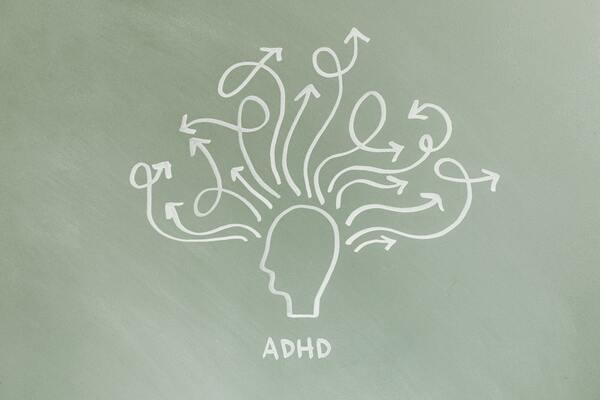
Although ADHD is usually diagnosed in childhood, it often carries over into adulthood. Although regarded as a neurodevelopmental disorder, the exact causes of ADHD are not yet understood. Brain scans have indicated changes in the brain in people with ADHD, with some areas of the brain becoming enlarged and other areas becoming smaller. Other research points toward an imbalance in the levels of certain neurotransmitters in the brain.
Since ADHD tends to run in families, scientists assume the condition has a strong genetic component.
Current research does not support the idea that hyperactivity in children is caused by bad parenting, eating too much sugar and junk food, or spending too much time on the computer or in front of the television. Although these behaviors and bad habits may exacerbate symptoms in a hyperactive child, there is currently no evidence that they can cause ADHD.
Acupuncture And ADHD: Can Acupuncture For ADHD Help Your Hyperactive Child?
A randomized clinical trial investigating the use of transcutaneous electrical acupoint stimulation (TEAS) for children aged 6-12 years old with ADHD found that non-invasive TEAS significantly improved symptoms and increased prefrontal cortex blood flow within four weeks.
The same study also compared acupuncture for ADHD with sham acupuncture and showed a larger general improvement in the behavior of children in the group that employed the standard acupressure points for ADHD.
A second randomized controlled study investigated using electro-acupuncture combined with behavior therapy to treat preschool children with attention deficit hyperactivity disorder. Overall comparisons between the experimental and control groups revealed a significant improvement of symptoms in those children who received the treatment at the half-year follow-up stage, showing the potential for acupressure for a hyperactive child to have a long-lasting effect. Again, adverse events were both rare and mild.
A meta-analysis on acupuncture for ADHD reviewed thirteen original trials, including 1,304 children, comparing acupuncture plus pharmacotherapy or acupuncture plus behavioral therapy with simple pharmacotherapy or behavioral therapy alone. The Conners’ index of hyperactivity (CIH) score was significantly reduced in the acupuncture treatment groups.
Another systematic review and meta-analysis reviewed a total of ten studies employing acupuncture for ADHD, including 876 patients overall. Acupuncture treatment was found to have a significantly higher effective rate in reducing hyperactivity scores compared to treatments with methylphenidate hydrochloride (MPH). One of the studies suggested that acupuncture treatment also helped to reduce adverse drug reactions in some patients.
What Are The Acupressure Points For Hyperactivity?
Acupoint: GV-20 (Other Names: The Governing Vessel-20/Bai Hui/Hundred Convergence)
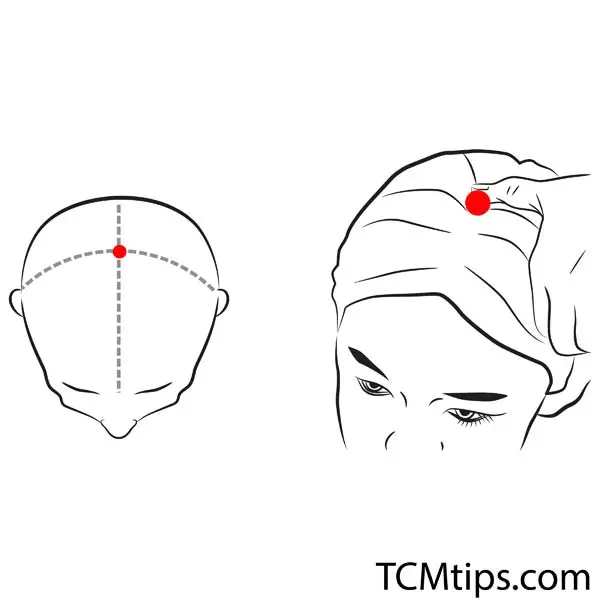
The Bai Hui acupoint helps with anxiety and dizziness, as well as headaches and insomnia. Activating the Bai Hui helps to treat energy imbalances and motor control issues and is often employed in acupuncture for autism.
In one clinical study, acupuncture at GV-20 was shown to have an instant sedative effect on the frequency of electroencephalogram α and β waves in rats.
GV-20 is found on the topmost part of the head, right in the middle. In Traditional Chinese Medicine (TCM), this is where the meeting point of many important meridians, including those of the bladder, the gall bladder, and the liver. Massaging this point helps to discharge heat in the yang channels and provides a calming and soothing effect, making it a useful point in acupressure for a hyperactive child.
You can locate GV-20 by following an imaginary line upwards from each ear to the top of the head. Apply gentle pressure here to improve your child’s concentration and focus. Massage this point for one or two minutes while encouraging your child to breathe deeply and slowly.
Due to its position on the top of the head, the Bai Hui is also considered an important acupoint in treating acupuncture for hair thinning.
Acupoint: EM-1 (Other Names: Si Shen Cong)


Si Shen Cong is not a single acupoint, but a cluster of four points on the top of the head surrounding GV-20. These are important acupressure points for blood circulation in the brain, and stimulating these points together will help to increase blood flow to the head and improve concentration and attention span.
Activating EM-1 clears wind from the body and calms the spirit, relieving feelings of dizziness and vertigo, and headaches. If you want to practice acupressure for your hyperactive child, you can massage the Si Shen Cong at the same time as you stimulate GV-20. The four points are all about one cun from the central GV-20 point, radiating out like the four points of the compass.
Acupoint: LI-11 (Other Names: Large Intestine-11/Qu Chi/Pool at the Crook)
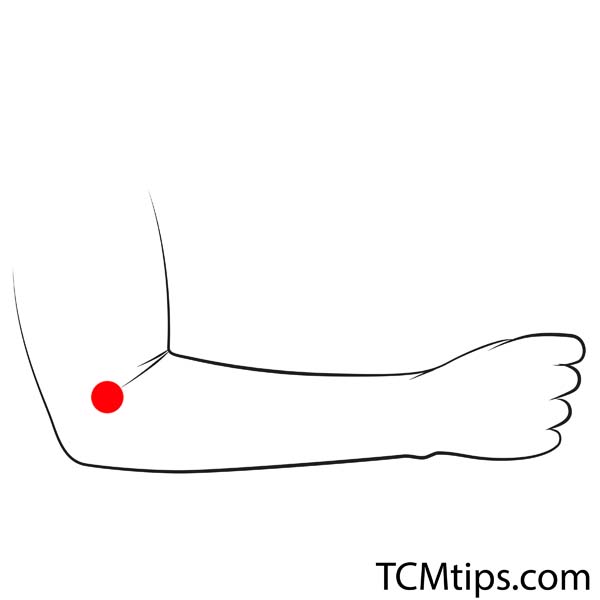
One of the most useful acupressure points for ADHD is found on the large intestine meridian. LI-11 is located on the outer edge of the elbow crease when you flex your arm. The Qu Chi, as it’s known in Chinese, is also recognized as one of the primary acupressure points for cold hands and feet.
Activating the Qu Chi promotes the free flow of blood and energy and provides a general calming effect. Ask your child to relax the wrist, then pinch the point between the thumb and the other fingers, and squeeze with firm pressure. Do this on both sides, repeating two or three times.
Acupoint: SP-6 (Other Names: Spleen-6/San Yin Jiao/Three Yin Intersection)
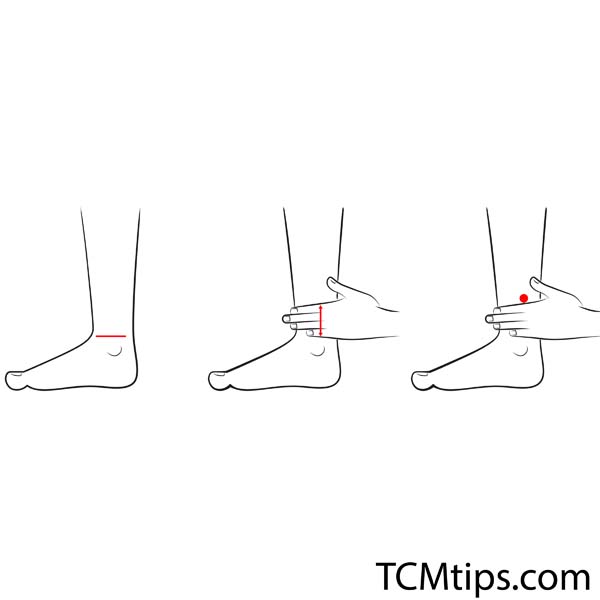
Acupressure for a hyperactive child will focus on removing obstructions and imbalances in the spleen, the kidneys, and the liver. Activating the San Yin Jiao, or Three Yin Intersection, helps to strengthen these organs and nourish the blood.
The San Yin Jiao is located on the lower leg on the posterior border of the tibia and is often employed in acupuncture for swollen ankles. To find it, place your finger on the inside ankle bone, then move directly up four finger widths. The point should feel tender to the touch.
The easiest way to stimulate SP-6 is to sit on a chair and massage the point with circular movements for a few minutes on both feet. Try it at home if you can get your hyperactive child to sit still long enough!
Acupoint: LI-4 (Other Names: Large Intestine-4/He Gu/Joining Valley)

Activating the LI-4 acupoint regulates heat in the body and expels stagnant energy. The He Gu, as it’s known in Chinese, is one of the primary points for improving circulation in the hands, commonly employed in acupuncture for hand pain. Since it connects directly to the brain, it can also help increase blood flow to the brain, improving cognitive function and overall brain health.
The He Gu lies in the webbed area between your thumb and your pointer finger. Hold your hand in a “C” shape and apply firm pressure on the point close to the midpoint of the metacarpal bone of the index finger. Press for a few seconds on each hand, taking care not to press directly on the bone.
Acupoint: Liv-3 (Other Names: Liver-3/Tai Chong/Supreme Rush)

Activating the Tai Chong helps to regulate the liver qi and calm the Shen, bringing the emotions into balance. When your hyperactive child becomes angry or frustrated, Liv-3 is a good point to massage.
Stimulation here promotes healthy blood circulation to the head and around the eyes, making it one of the important acupressure points used in acupuncture for eye bags.
Liv-3 is located on the foot, in the depression between the big toe and the second toe. Massaging this point helps to improve memory and concentration and relieve headaches and fatigue. Students like to use this point to help them focus on studying for their exams, and you can use it at home in acupressure for your hyperactive child.
Conclusion
- Stimulating GV-20 discharges heat in the yang channels and provides an instant sedative effect.
- Massaging EM-1 increases blood flow to the head, improving concentration and attention in a hyperactive child.
- Activating the LI-11 promotes the free flow of blood and energy throughout the body and provides a general calming effect.
- Stimulation of SP-6 removes obstructions and imbalances in the spleen, the kidneys, and the liver.
- Acupressure at LI-4 increases circulation to certain regions of the brain, which can have a significant effect on concentration and attention.
- Activating Liv-3 regulates the liver qi and calms the Shen, bringing the emotions into balance.

Try our Anti-Aging Gua Sha Tool designed to bring out your skin’s natural glow.
Best Gua Sha Product- Anti-Aging: The tool is designed to target 11 specific aging signs such as wrinkles and sagging skin. By following the 7-step routine, users can improve skin firmness and reduce fine lines naturally.
- Enhances Skincare Routine: It works effectively with serums and lotions, boosting absorption and efficacy of skincare products.
- Visible Skin Improvement: Users can expect a smoother complexion, reduced puffiness, and a more youthful appearance.
 P. Sze
P. Sze 